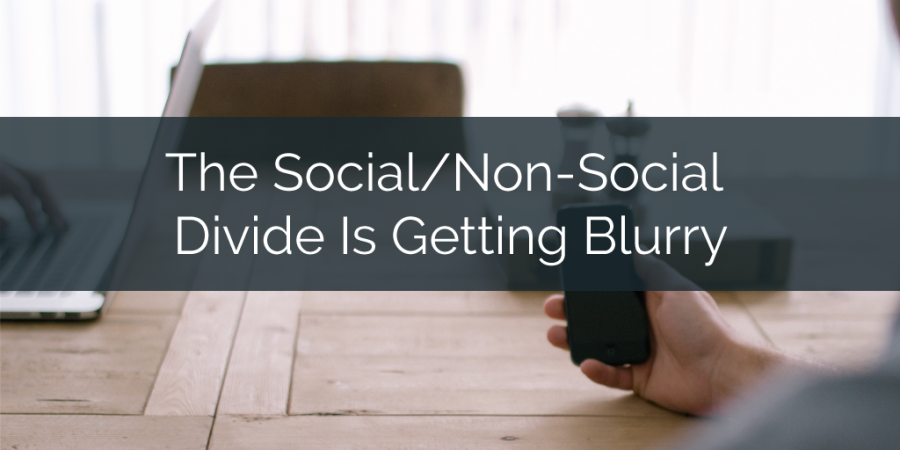
Around the office we like to say that social media is eating marketing. It’s kind of a weird thing to think about — personally I always picture Pacman — but every day it seems more and more true.
Back in 2011, Audi became the first brand to use a hashtag in a Super Bowl spot, with #ProgressIs. With Twitter rapidly growing and becoming a major hub of Super Bowl marketing conversation, it made a ton of sense. Several million dollars for 30 seconds is a ton of money no matter the venue, so why not give the audience a focused way to talk about and extend the reach of the TV ad?
Now, hashtags and social icons are standard practice in all video content.
More money is also going directly to ads on social media–both via sponsored content and promoted/boosted posts. With organic reach going down across all social networks, brands are finally seeing social as a paid marketing channel. Just to put it into context, Facebook reported a whopping $11.5 billion in ad revenues last year.
Here’s the gist of it: digital is getting more of the overall marketing budget, and more of that digital budget is going to social.
But even more interesting than more money going to social networks is that social networks are now stretching their marketing impact off of their networks. Last year Facebook bought Atlas, the digital advertising platform that can serve ads anywhere on and across both the desktop and mobile web based on Facebook insights. Twitter announced a partnership with Google to serve tweets on Google SERPs, and they’ll also be syndicating promoted tweets on Flipboard and Yahoo! JAPAN (with more partners coming). Finally, LinkedIn announced that they, too, will soon be serving ads around the web, based on their treasure trove of data on people’s professional lives.
Social is reaching out its arms, grabbing more and more of the digital world. And it’s making social/non-social divide blurry.
Really, now that web banners/digital display/whatever you want to call them have been eaten by social, what’s left? What digital marketing channel isn’t hugely impacted by social?
Search engines, in addition to serving up social ads, take social into account in their algorithms. Digital banners are being served by social networks. Video is increasingly being hosted exclusively by social networks (yes, YouTube is social, too). Publishers are relying on their content to be distributed via social. The list goes on…
What does this blurring mean for marketers?
It means marketing departments need to be more integrated and cohesive than ever. Social marketers and digital marketers and ecommerce marketers need each others’ insights and expertise more than ever before. When the most effective direct-response retargeting is based off of social data, the ecommerce marketing team and the social marketing team better be on the same page.
Understanding social isn’t just for social marketers. A deep understanding of social is now important for the entire marketing department to succeed.
The earlier that marketers understand this shift, the better they’ll be prepared for the future. How is your marketing department dealing with this blurr-ification?
This article was syndicated from Business 2 Community: The Social/Non-Social Divide Is Getting Blurry
More Digital & Social articles from Business 2 Community:
- How to Evaluate Your Ecommerce Needs: A Breakdown of Benefits for Licensed and SaaS Solutions
- What the Pending Demise of Google+ Means for PR and Marketing
- Freelancer Tips: How To Use Social Media To Attract New Clients
- Are Social Media Analytics Lying to You?
- Why Company Directors Need To Be ‘Out, Loud, And Proud’ On Social Media




